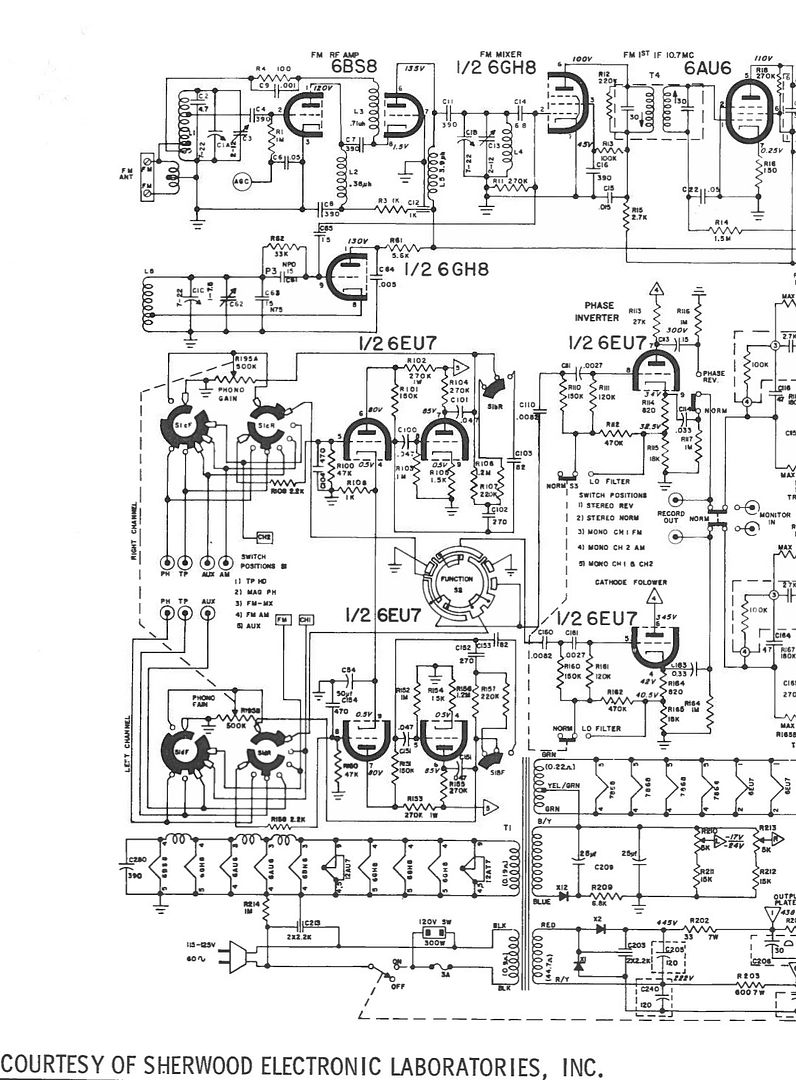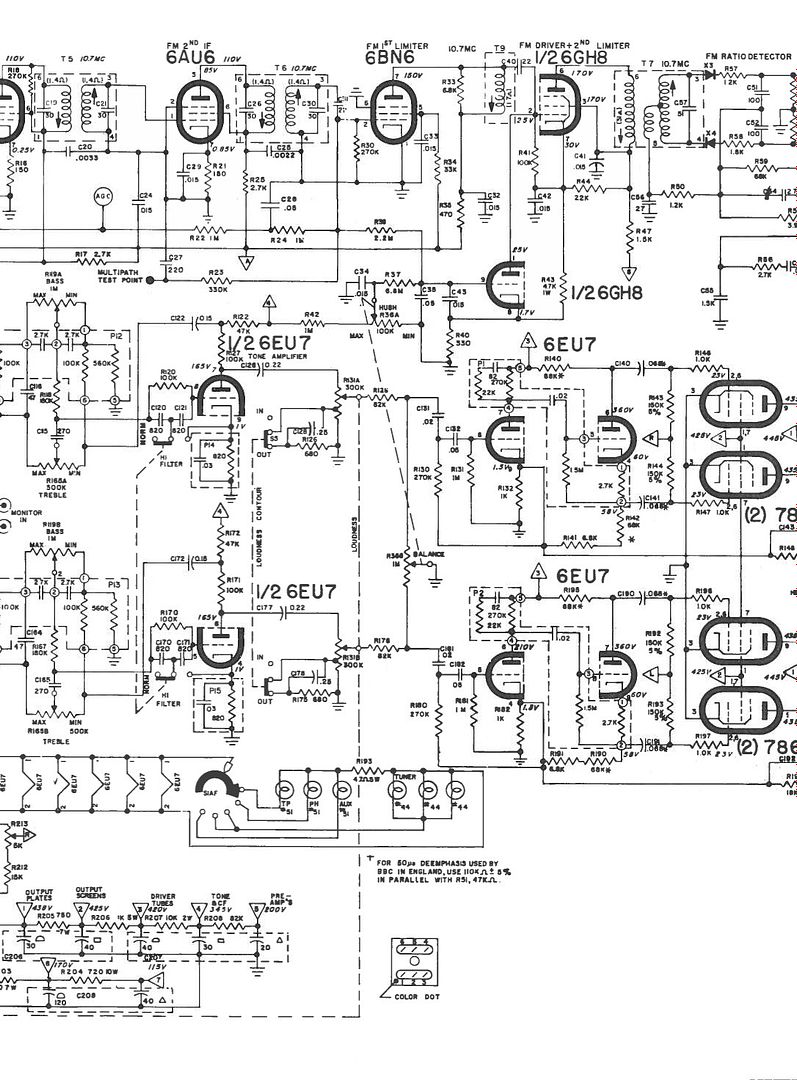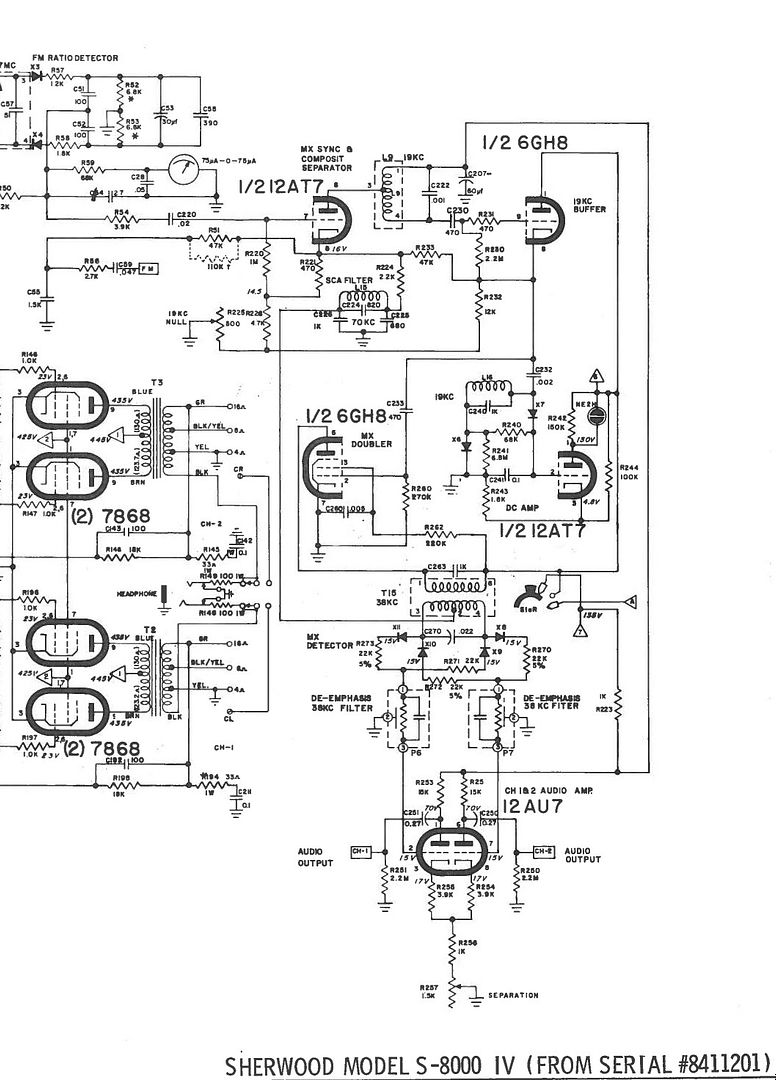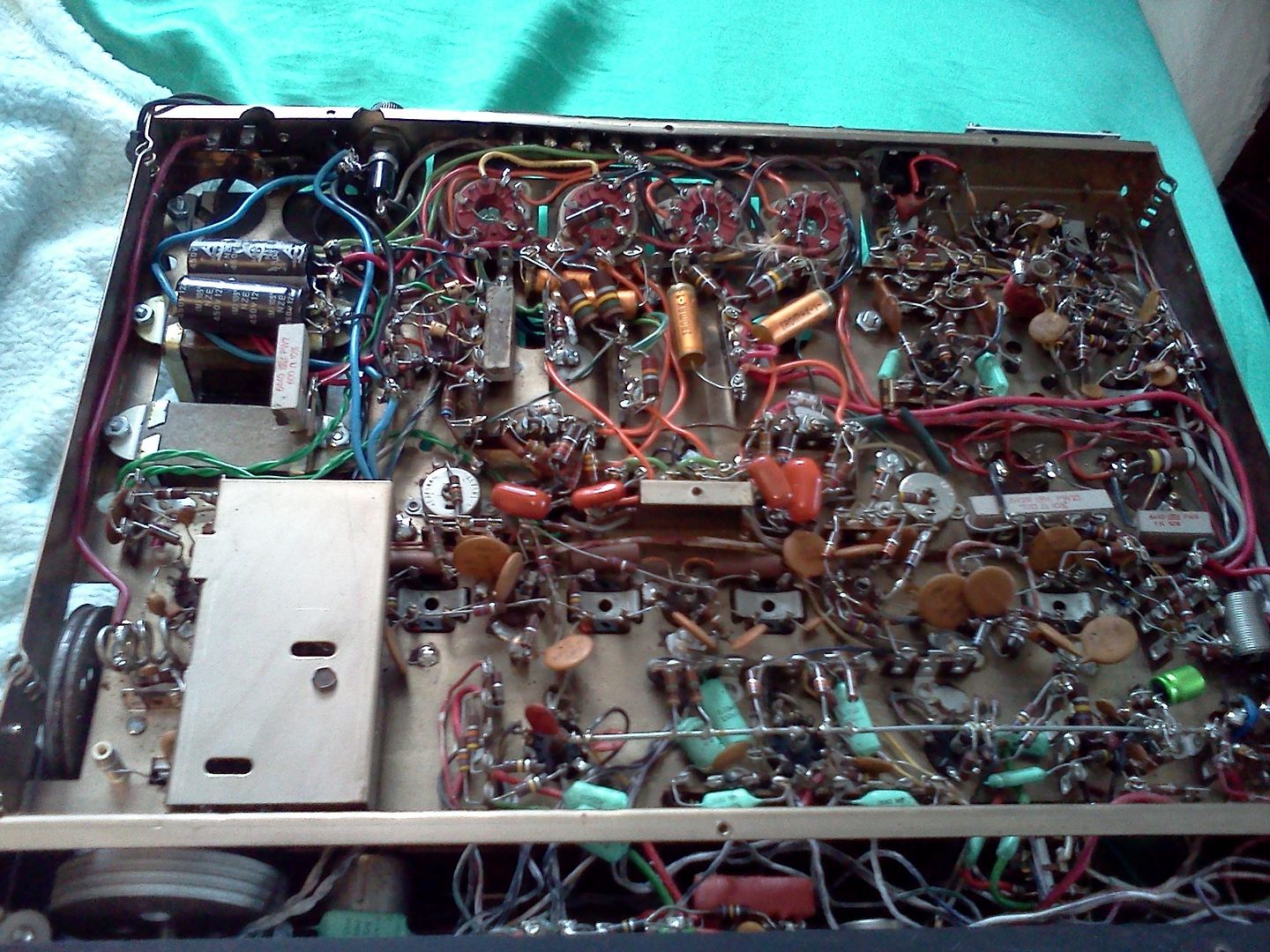basplin
Active Member
Hi all - I retrieved my Sherwood S-8000IV from the shop yesterday after 7 months there. Due to a lack of communication/completion, I decided it was time for it for come home - the tech did not finish it. He did replace several caps and put in new power tubes - EH 7868's. When I brought it to him, all inputs had some noise in them and the sound was lopsided - it came out of the right speaker more than the left speaker. The AUX section works great now. No noise, balanced sound.
There are a few things that I want to see if I can fix myself.
The FM tuner (no AM tuner on this unit) works in stereo and mono, but the sound is still not balanced in the center - it's louder on the right side and I have to turn the balance knob about halfway to the left for it to be centered. Again, this was an issue I noticed on all channels when I originally took it to this tech 7 months ago.
The second issue is a loud hum in the phono and tape inputs - and that's with nothing hooked up to them. The hum does respond to the volume, so that would mean it is a grounding issue, right? I know these inputs work as I used them regularly before taking it to this tech 7 months ago.
Any ideas as to what I could look at that could be causing these problems? Please be specific as possible - I am good with my hands and fixing things, but am still new to tube audio.
Thank you!
There are a few things that I want to see if I can fix myself.
The FM tuner (no AM tuner on this unit) works in stereo and mono, but the sound is still not balanced in the center - it's louder on the right side and I have to turn the balance knob about halfway to the left for it to be centered. Again, this was an issue I noticed on all channels when I originally took it to this tech 7 months ago.
The second issue is a loud hum in the phono and tape inputs - and that's with nothing hooked up to them. The hum does respond to the volume, so that would mean it is a grounding issue, right? I know these inputs work as I used them regularly before taking it to this tech 7 months ago.
Any ideas as to what I could look at that could be causing these problems? Please be specific as possible - I am good with my hands and fixing things, but am still new to tube audio.
Thank you!
Last edited:












